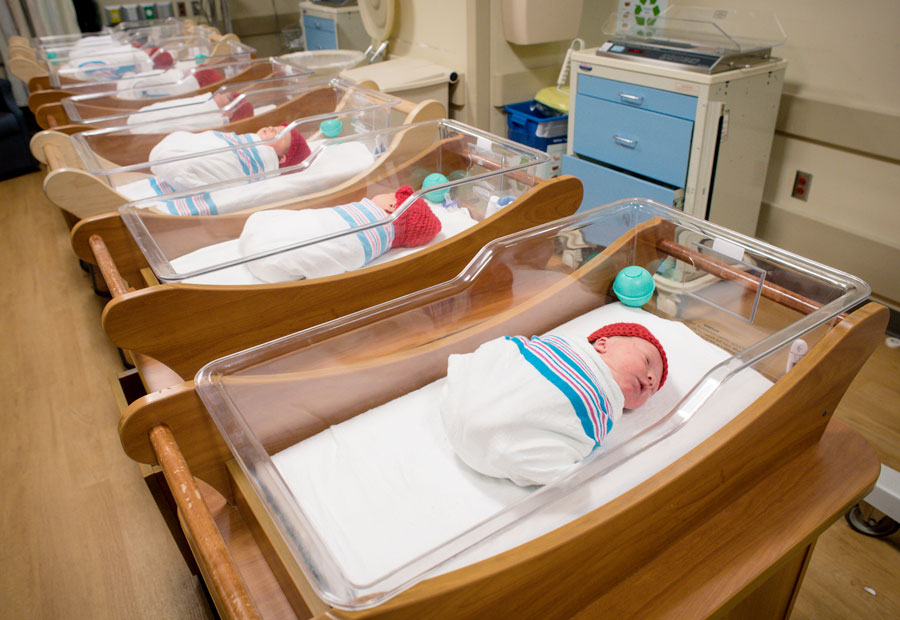 The hope is that the red hats donned by the hospital’s littlest patients will help spark conversation about heart-healthy practices for children.Babies across UAB’s Women and Infants Center will be spotted wearing knitted red hats, instead of the traditional pink and blue, this February for a good cause during American Heart Month.
The hope is that the red hats donned by the hospital’s littlest patients will help spark conversation about heart-healthy practices for children.Babies across UAB’s Women and Infants Center will be spotted wearing knitted red hats, instead of the traditional pink and blue, this February for a good cause during American Heart Month.
The hats, knitted by volunteers and donated by the American Heart Association of Birmingham, are part of the association’s “Little Hats, Big Hearts” initiative to spread awareness about congenital heart disease, as well as how families can lead heart-healthy lives.
Congenital heart disease is a problem present at birth that involves defects of the structures of the heart, its valves or blood vessels. It is the most common type of birth defect, affecting one in 100 babies. Many defects can be detected pre-birth and treated shortly after birth, while others are not diagnosed until childhood or even later in one’s adult life as symptoms arise.“
About 25 percent of cases of congenital heart disease are considered critical, which means that they will require an intervention early in life,” said DeeAnne Jackson, M.D., UAB newborn nursery medical director. “However, most of these cases are now diagnosed by prenatal ultrasound screening or through a simple oxygen test measured on the baby’s hand and foot at about 24 hours of age.”
For the team in the Women and Infants Center, educating newborns’ parents on congenital heart disease is a focus, and they hope the red hats donned by the hospital’s littlest patients help spark conversation about the disease and heart-healthy practices can be implemented for children early on.
“We aim to inform patients on ways they can improve the lifelong heart health of their children by practicing and teaching a healthy lifestyle from a very early age,” Jackson said. “Whether it’s about their child’s having a diet that includes a variety of fruits and vegetables or making regular physical activity a fun part of the family’s daily routine, we try to be resources and help these families lead their healthiest lives.”